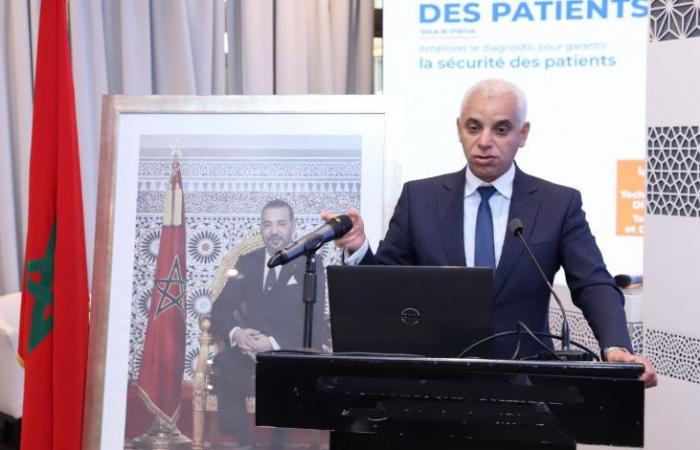
The Minister of Health and Social Protection, Khalid Ait Taleb, stressed, Tuesday in Rabat, the contribution of new technologies in improving diagnoses and reducing medical errors, in order to ensure patient safety in the medical field.
Speaking at the National Conference on Patient Safety, organized by the Ministry of Health and Social Protection in partnership with the Office of the World Health Organization (WHO), under the theme “Improving diagnosis to ensure patient safety”, Mr. Ait Taleb said that this year’s theme fits perfectly with the department’s vision aimed at strengthening the quality of care, while ensuring patient safety at the heart of the health system.
“Patient safety is not just an aspiration, but a moral and professional imperative. Therefore, we must be aware that improving diagnostic safety is an important lever for achieving patient safety,” he said at the meeting, held on the occasion of World Patient Safety Day, noting that accurate and timely diagnosis is the key to effective treatment.
The Minister added that patient safety has been a major public health issue for decades, leading the WHO to continually work to achieve this goal, particularly through the Global Action Plan for Patient Safety 2021-2030, the expected objective of which is to reduce risks, errors and harm associated with health care.
Similarly, Mr. Ait Taleb stressed that his department has recently adopted structuring measures to integrate the recommendations of this global plan into national health policies, notably through the launch of training programs for healthcare providers, with an emphasis on safe practices and continuous improvement of care processes, in addition to the development of a National Strategic Plan for Patient Safety in partnership with WHO.
Addressing, in the process, the support for the project of the extension of health insurance, the minister emphasized the need to set up robust systems for the management of clinical risks and the continuous improvement of medical practices, in order to meet the expectations of the population, as well as the establishment of territorial health groups, the central pillar of this overhaul, aimed at promoting new local and integrated governance, focused on efficiency and coordination, in addition to the integration of new technologies, among others.
For her part, the WHO representative in Morocco, Maryam Bigdeli indicated that the celebration of this World Day stands as a cornerstone for strengthening efforts to promote global health and patient safety, as well as an opportunity to highlight the essential role of patient safety in achieving universal health coverage.
In this regard, she called for the intensification of efforts to reduce diagnostic errors through multimedia policies, strategies and interventions, the strengthening of human resources skills and the effective participation of patients, their families and health professionals, adding that ensuring patient health safety is the real challenge to be addressed everywhere in the world.
Citing WHO figures, the UN official said that one in ten patients is exposed to an adverse incident in hospitals in high-income countries, while nearly 134 million incidents associated with unsafe care occur in hospitals in low- and middle-income countries, contributing to approximately 2.6 million deaths per year, adding that the social cost of harm to patients can be estimated at between one thousand and two trillion dollars per year.
She also noted that the 74th World Health Assembly endorsed, in 2021, the Global Patient Safety Action Plan 2021-2030, which aims to eliminate preventable harm in health care and involve patients, families and caregivers to ensure effective diagnosis.
Furthermore, Ms Bigdeli highlighted WHO’s commitment to provide technical and financial support to the Ministry of Health and Social Welfare to develop and implement an integrated national strategic plan for patient safety.
Please note that a four-week national awareness campaign will be launched as part of the Global Patient Safety Action Plan 2021-2023.





